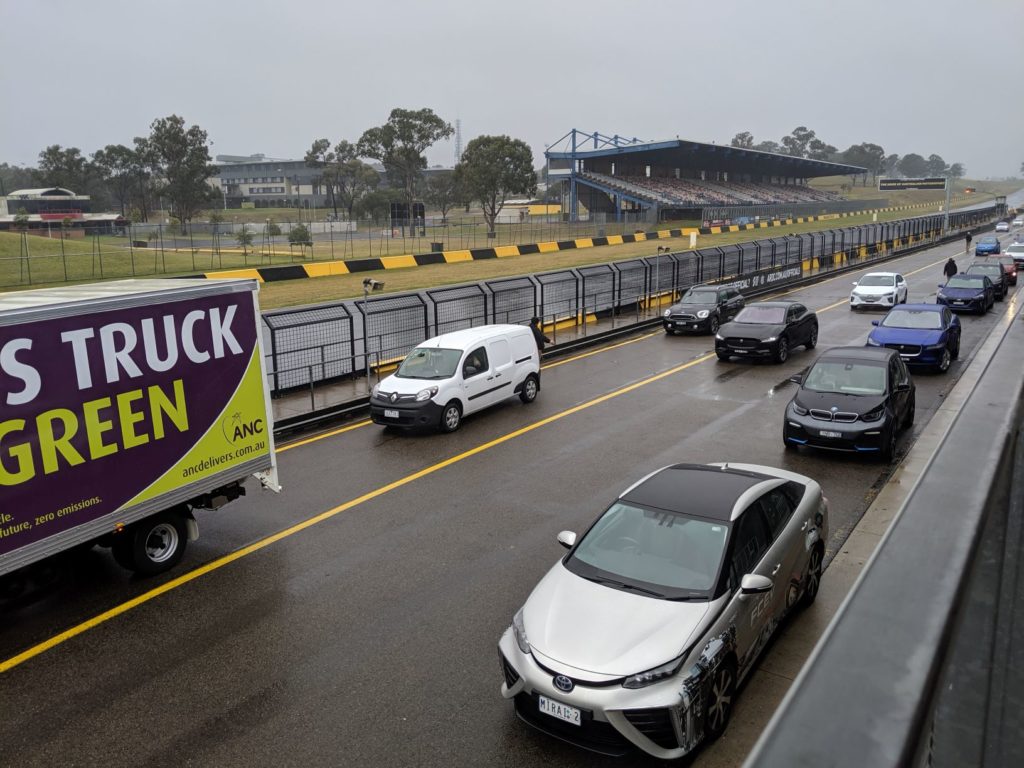For fleet decarbonisation and electrification, it is crucial to engage staff in the transition process.
This can be done by coming up with a change management strategy, sharing the vision and defining the journey, drafting up a communication plan on related policies, processes and how it impacts them – as well as providing education, training and opportunities for evaluation and feedback.
Change management strategy
It is crucial to prepare a strategy to manage change associated with fleet decarbonisation and electrification for your organisation.
Get started early and learn
The first large-scale fleet electrification project will take time and resources. Start the process early and learn from testing EVs and navigating infrastructure upgrades.
Establish an internal cross-functional electrification task force → align teams from, sustainability, procurement, fleet operations, engineering, maintenance and facilities. More broadly, consider including members from senior leadership and finance.
Collaborate and join coalitions
Do not approach this alone. Collaborate with manufacturers, suppliers, utilities and government agencies. [1]
Share the vision, outline the journey and define the milestones
You need to engage your staff so they are across the overall vision of what you are trying to achieve, work with them to outline what the journey looks like and get them to help you define the milestones.
You need to agree on the fleet decarbonisation/electrification journey for your company, the milestones and ensure this is communicated.
For example, IKEA Australia’s has clearly outlined its milestone goals to shift its entire delivery and assembly vehicle fleet to electric by 2025.
The vision is set out by IKEA Group’s People & Planet Positive [2] sustainability goals aligned with the UN’s Sustainable Development Goals framework. [3]
The milestone goals are to reach 5% in FY19, 10% in FY20 and 100% nationally by FY25. [4]
Internal staff communication
This is everything related to communicating the change to your staff members and should consider who, what, how, when and where the communication about fleet decarbonisation and electrification should occur.
- identify stakeholders – identify who needs to be communicated to, at which points along the journey.
- agree on the dialogue, language and tone of voice of the communication
- create communication channels – this can be electric vehicle fleet launch events, email, company intranet, and so on.
- ensure staff questions, such as “how do I get involved?”, “how does this impact me?” are included in communications.
Low emission fleet policies, processes and procedures
It is important to have solid policies relating to mobility for your business.
For low emissions fleets, you need to consider:
- fleet procurement policies
- vehicle emissions policies
- vehicle incentive measures.
These need to be consistent with current regulations, codes and standards. The policies must provide information and education for your employees, customers, freight and logistics departments and other partners.
For example, the QLD government has the following focus areas for its fleet[6]:
- replace existing vehicles with plug-in hybrid electric vehicle models
- introduce EVs into car sharing pools
- introduce BEVs to match existing lease vehicle replacements
- incentivise agencies to take up EVs
- introduce EV evaluations
- explore opportunities encouraging manufacturers to speed up the importation of EVs through bulk purchasing deals.
You will need to outline processes and procedures that explain what is involved with the transition, the new roles and responsibilities that have been created, and how they will impact employees’ day to day operations.
Education and training
Staff education and training is important to ensure that they are adequately equipped with the information and skills needed to adapt to the change being introduced by the fleet transition.
This can come in the form of providing education for staff to sell the benefits and mythbust for EVs, and providing driver training so that staff have the knowledge to confidently drive, operate and maintain electric vehicles in the fleet.
Drive days can offer an opportunity for drivers to experience firsthand what it is like to drive an electric vehicle and can be an ideal opportunity for knowledge sharing and networking.

Evaluation and feedback
As with all organisational changes, fleet decarbonisation and electrification transitions need evaluation from your staff to ensure that there is a process for continuous improvement, and so that feedback can be incorporated into future product development This can be achieved through methods such as survey evaluation.

